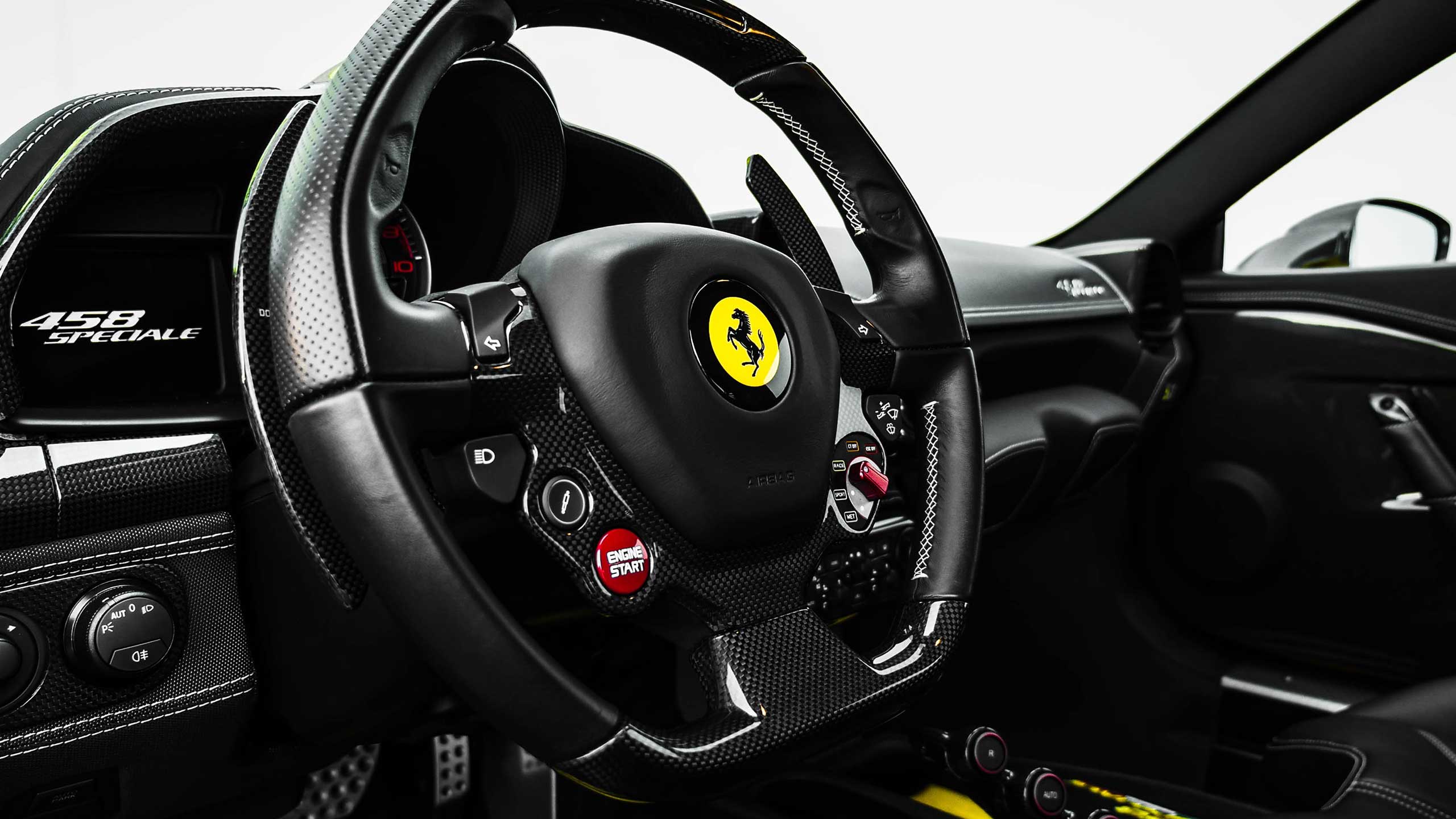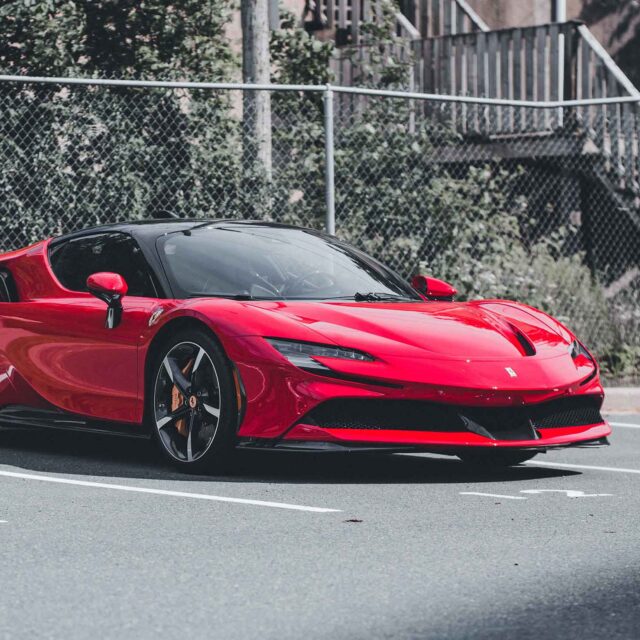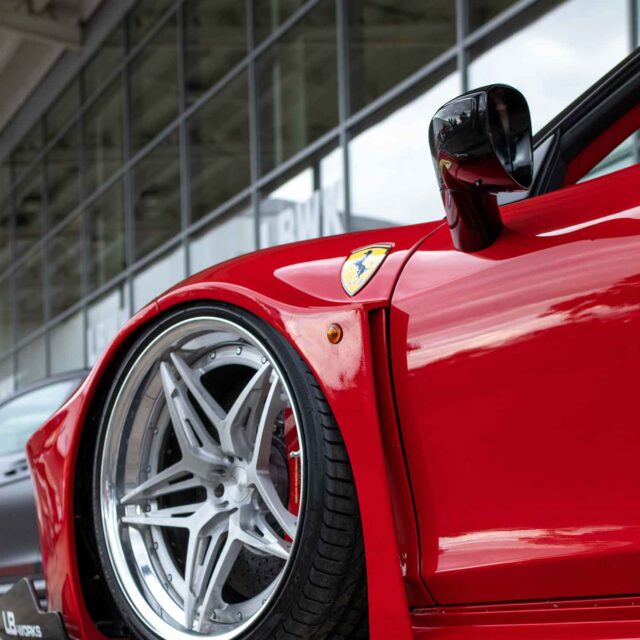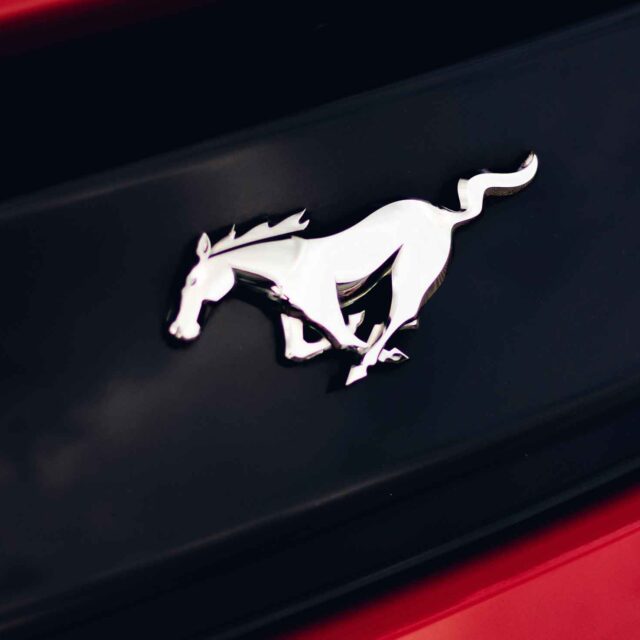In 1947 the Ferrari 125 S became the first Ferrari-badged automobile. Gioacchino Colombo and Giuseppe Busso created the V12 engine. Sport and competition versions of the 125 S had different bodywork but were otherwise identical. Enzo Ferrari called the 125 S’s Piacenza premiere “promising disaster.” Franco Cortese had to abandon a race due to a fuel pump failure. The 125 S raced thirteen times in the next four months, winning six.
The Ferrari 159 S was developed from the 125 S by increasing the engine’s bore and stroke to 1903 cc. It also had a monocoque shell or a separate mudflap to improve its aerodynamic penetration coefficient. Raymond Sommer won the 1947 Turin Grand Prix in the newly established Ferrari.
As with the 159 S, the 166 Inter Turismo’s bores and strokes were enlarged, and both open-wheel and full-bodywork variants were made.
Allemano introduced the 166 S berlinetta and spider in 1948. The berlinetta won Mille Miglia while the spider won Giro di Sicilia. Ferrari followed this achievement with a one-off prototype for a production car dubbed the 166 Sport, but the name was changed to 166 Inter. Farina created notable open-top and closed cars. Most owners wanted three carburettors on their custom-built automobiles.
The Two-litre Tipo 166 engine inspired sports and single-seater variants. The Ferrari catalogue of the day said that the 166 Sport could be converted for international two-seater and single-seater racing (thus the designation Inter). Because the lights and mudguards could be mounted and detached, this model was versatile.
Designed for long-distance racing, the 166 MM acquired its name from the Mille Miglia, which Maranello cars won often. Touring “Superlight”-built its coachwork. The 166 MM was light, dynamic, and rigid. The 166 MM’s engine runs on “regular” gasoline.
The 195 Inter, a touring-type variant of the 195 S, had a more powerful, flexible engine that made extreme performance driving easy. Touring, Ghia, and Ghia Aigle (the first foreign coachworks to work on a Ferrari) built a number of successful GT variants. Vignale manufactured exquisite, customised coupés for the most privileged clients.
A 2,350-cc 12-cylinder development. Increased power was delivered more smoothly. Both the open and coupé 195 Ss were Touring-bodied.
Giannino Marzotto won the 1950 Mille Miglia in a coupé. Bad weather marred that race, but Marzotto wore a double-breasted suit and tie.
The 3322-cc Lampredi engine debuted in the 275 S. Two Touring barchettas entered the 1950 Mille Miglia. During the race, their big engines caused transmission problems. The engine demonstrated its potential when employed in the single seater, for which it was built. Ascari finished sixth in the Belgian Grand Prix on June 18, 1955.
The American market showed great promise for Maranello every year. The 340 America, based on the 340 F1, was intended to meet the new breed of owner. Lampredi designed V12. Touring’s initial model resembled the 166 Barchetta. Ghia and Vignale developed interesting versions, and Gigi Villoresi won the 1951 Mille Miglia riding a Vignale Berlinetta.
The 212 Inter’s Gioacchino Colombo V12 was bored. The 166 MM chassis was modified to send more power to the road. Later versions introduced the ‘Tuboscocca’ tubular chassis, which boosted structural stiffness.
Some potential buyers were concerned of the competition-level performance of engines that entered the market with little detuning. Ferrari created the 342 America, a more comfortable four-seater with a flexible engine, a new synchronised 4-speed gearbox, and user-friendly handling, to fulfil this client’s expectations.
The 212 Export’s V12 was boosted to 2562.51 cm3.
A new, more sturdy chassis was built to handle the engine’s 150 horsepower. In the 212, Vittorio Marzotto won Targa Florio and Taruffi-Chinetti won Carrera Panamerica.
The 1952 V12 Ferrari 250 S had Vignale and Touring coachwork based on Gioachino Colombo’s designs. Bracco won the 1952 Mille Miglia on the Passo della Futa, and Ascari won Le Mans. The 250 Sport’s continual upgrades led to the 250MM.
The 1953 250 Europa replaced the 212 Inter and shared the 375 America’s chassis for scale. Lampredi’s V12 stayed under three litres.
The 375 model was the 342 America’s successor. Aurelio Lampredi’s twin-inlet V12 replaced Colombo’s.
The 1954 Ferrari 250 GT Coupé was Ferrari’s first attempt to standardise a model for the average driver. The 250 Europa was built with a Colombo Type 125 engine and three Weber 36 DCZ carburettors.
The Ferrari 250 GT Berlinetta debuted in 1956. These automobiles were great for getting to the track and winning there.
The 410 Superamerica’s engine debuted on the 375 America at the 1955 Paris Motor Show. At the 1956 Brussels Motor Show, the automobile was introduced. Pinin Farina designed the attractive, large body. This series-production model spawned several competitive variations, as is Ferrari’s habit.
Pininfarina unveiled the 250 GT Cabriolet at the Geneva Motor Show in 1957, a year after Boano’s identical idea. Pininfarina’s rendition won over affluent clients with its timeless looks.
Due to Ferrari’s motorsports fame and importer Luigi Chinetti, the US became a key market. John Von Neumann, the west coast representative, saw promise for an open Spider adapted to the California sun, the Ferrari 250 California.
The short-wheelbase 250 GT Berlinetta passo corto debuted in Paris in 1959. With cooler spark plugs, racing tyres, and a rollbar, the vehicle could win its class on any track. The 250 GT 2+2 was Ferrari’s first mass-produced four-seater in 1960. Single overhead camshaft Tipo 250 Built 957 3-liter V12s. Four gears plus overdrive were included. Pininfarina’s bodywork combines aerodynamics and elegance. The last fifty vehicles made (the last one left the factory in 1963) used the 330 America’s 4-liter V12 engine.
The 400 Superamerica was produced in two series between 1960 and 1964. Big, 4-liter V12 with lots of power and torque, austere yet opulent interior, robust suspension settings that did not sacrifice comfort, and an overdrive transmission. Pininfarina bodied the spider, cabriolet, and aerodynamic coupé variants, as well as the Superfast II, III, and IV.
The 250 GTO was the competitive version of the 250 GT road car. It debuted at Ferrari’s annual preseason news conference in January 1962 as the only front-engine model, with its monoposto and sports racing equivalents having mid-engines.
The 1964 Brussels Show introduced the 330 GT 2+2. It had a 4-liter Type 209 V12 with a larger engine block than the 400 SA series it replaced. Two generations of Pininfarina’s 330 GT 2+2 were constructed. First series (1963-1965) had four headlights; the second series (1965-1967) had two. There were over 1,000 cases.
1964 Geneva Motor Show: Ferrari 500 Superfast, a premium automobile with uncompromising performance. Derived on the 400 Superamerica, it used a Colombo-Lampredi-designed engine. With 400 horsepower from three 40 DCZ/6 Webers, it topped its class. First series produced 25 4-speed units. In 1966, 12 faster vehicles were released.
The Pininfarina-designed 275 GTS shared the 275 GTB’s rear-mounted gearbox and independent rear suspension. Given the style of automobile and its target customer, torque and flexibility were favoured over maximum power. The 275 GTB had alloy wheels, while the GTS used wire wheels for a classier appearance.
Rear-mounted gearbox and independent rear suspension were new on the Ferrari 275 GTB.
This Ferrari 330 GTC was between the 275 GTB Berlinetta, whose chassis it shared, and the 330 2+2 Coupé, from which it got its 4-liter V12 engine. Pininfarina’s exquisite bodywork was inspired by the 500 Superfast in front and the 275 GTS in behind. 600 330 GTCs were manufactured till 1968.
The 1966 365 Californias was one of the most famous Italian open sports cars. Pininfarina’s beautiful exterior and clever 4.4-liter V12 engine make it the benchmark in high-performance luxury sports cars. Only fourteen of the expensive, rare cars were constructed.
The 330 GTS debuted at the 1966 Paris Motor Show. It used the same V12 as the 330 GTC, which was based on the 400 Superamerica’s engine. Pininfarina again created a clean, beautiful style that fans loved. The GTS helped Ferrari develop high-performance, luxurious open sports vehicles.
The 275 GTB4 was the first “production” Ferrari with the four-overhead camshaft V12 and was based on the P2 prototype.
Ferrari needed to boost sales and cut expenditures. With the Dino 196 S prototype existing in-house, it was possible to create a road-going version that could be constructed on an assembly line for the first car in Ferrari history. Pininfarina’s iconic aesthetics and Ferrari’s transverse V6 engine gave rise to the Dino 206 GT.
The 365 GT 2+2 debuted at the 1967 Paris Motor Show as the 500 Superfast’s successor, carrying on the traditions of the 250 GTE and 330 GT 2+2. Elegant and imposing, it was the first Ferrari to come standard with power steering, air conditioning, a large trunk, and two back seats.
The 365 GTC’s design was identical to the last 330 GTCs made, with the engine bay air inlets placed on the bonnet. The new V12 engine delivered more torque at middle rpm, better flexibility, and quicker acceleration. Two hundred were built.
The 275 GTB4 was a milestone for high-performance front-engined sports vehicles. Sleek and futuristic Pininfarina styling was complemented with a 4.4-liter V12 engine fed by six Weber twin-choke 40 mm carburettors. The rear transmission transaxle produced a car of remarkable balance that ensured a unique driving experience. Fans call it “Daytona”
At the 1976 Paris Salon, the 400 series succeeded the 365 GT4 2+2, and the 400 Automatic was the first Ferrari with an automatic transmission.
Enzo Ferrari announced the GTO in September 1983 and revealed it at the Geneva Motor Show in March 1984. The GTO’s iconic name, magnificent style by Pininfarina, 2.8-liter, 8-cylinder engine, and usage of composite materials made it the closest thing to a race vehicle.
In 1984, the Testarossa returned as the 512 BBi’s successor. Pininfarina’s design was bold and creative. Larger side intakes led to the Testarossa’s signature long side strakes.
Ferrari’s 40th anniversary in 1987 inspired the F40. Pininfarina designed and produced this composite berlinetta. Its high-performance, turbo-charged running gear and first-class chassis provided it racing-car-like dynamic capabilities.
The F355 Berlinetta, shown at the 1994 Geneva Motor Show, set a class milestone. The new 5-valve-per-cylinder V8 was paired with an excellent chassis and electronically controlled suspension.
The 550 Maranello was Ferrari’s retort to critics who claimed a front-engined V12 car could not defeat a mid-engined sports car. The 550 Maranello was faster and more practical than the F512M due to its front-engine, rear-drive arrangement.
The Challenge Stradale joins the 360 Modena and 360 Spider to provide drivers racing-car-like road performance. The Ferrari Challenge International Championships and FIA GT races helped technicians design innovative solutions for the Challenge Stradale. This relationship to racing was underscored with a major weight reduction, engine setup, aerodynamics, braking system, and F1-style gearbox.
The 612 Scaglietti’s avant-garde design continues Ferrari’s 2+2 history in flair. The Pininfarina-designed 612 Scaglietti honours Sergio Scaglietti, the famed Modenese stylist and coachbuilder who designed some of the most exquisite Ferraris of the 1950s and 1960s.
Michael Schumacher tested the 430 Scuderia as it was being created, using the manner that made him distinctive on the track.
Ferrari named this adaptable convertible after one of Italy’s most picturesque places. Portofino’s picturesque tourist harbour was identified with elegance, sportiness, and subtle luxury. Rosso Portofino is the premiere colour of the new Ferrari. A Ferrari built to be driven every day that transforms from a ‘berlinetta’ coupé to a drop-top and delivers a unique Ferrari soundtrack and exceptional driving enjoyment.
When developing a new model, Ferrari must first push its own limits. This issue was made harder by the need to create a new 12-cylinder engine, which launched the Prancing Horse tale in 1947. Intensive research and development focused on harnessing Ferrari’s track-derived engineering know-how generated the 812 Superfast, designed to give benchmark performance and the most compelling and satisfying driving experience conceivable. The 812 Superfast is the most powerful and quickest Ferrari ever constructed, with 800 cv, 60 more than the F12berlinetta (with the exception, of course, of the rear-engined special limited-series 12-cylinders). The 812 Superfast begins a new chapter in Ferrari 12-cylinder history, building on the F12berlinetta and F12tdf. To maximise power and weight distribution, the automobile has a front-mounted engine and rear-mounted gearbox. First Ferrari with EPS (Electric Power Steering).
The Ferrari 488 Pista has the company’s most powerful V8 engine and highest level of racing technology transfer. The name, which means ‘track’ in Italian, was selected to honour Ferrari’s motorsports legacy. The Ferrari 488 Pista incorporates the 488 Challenge and 488 GTE’s track expertise.






